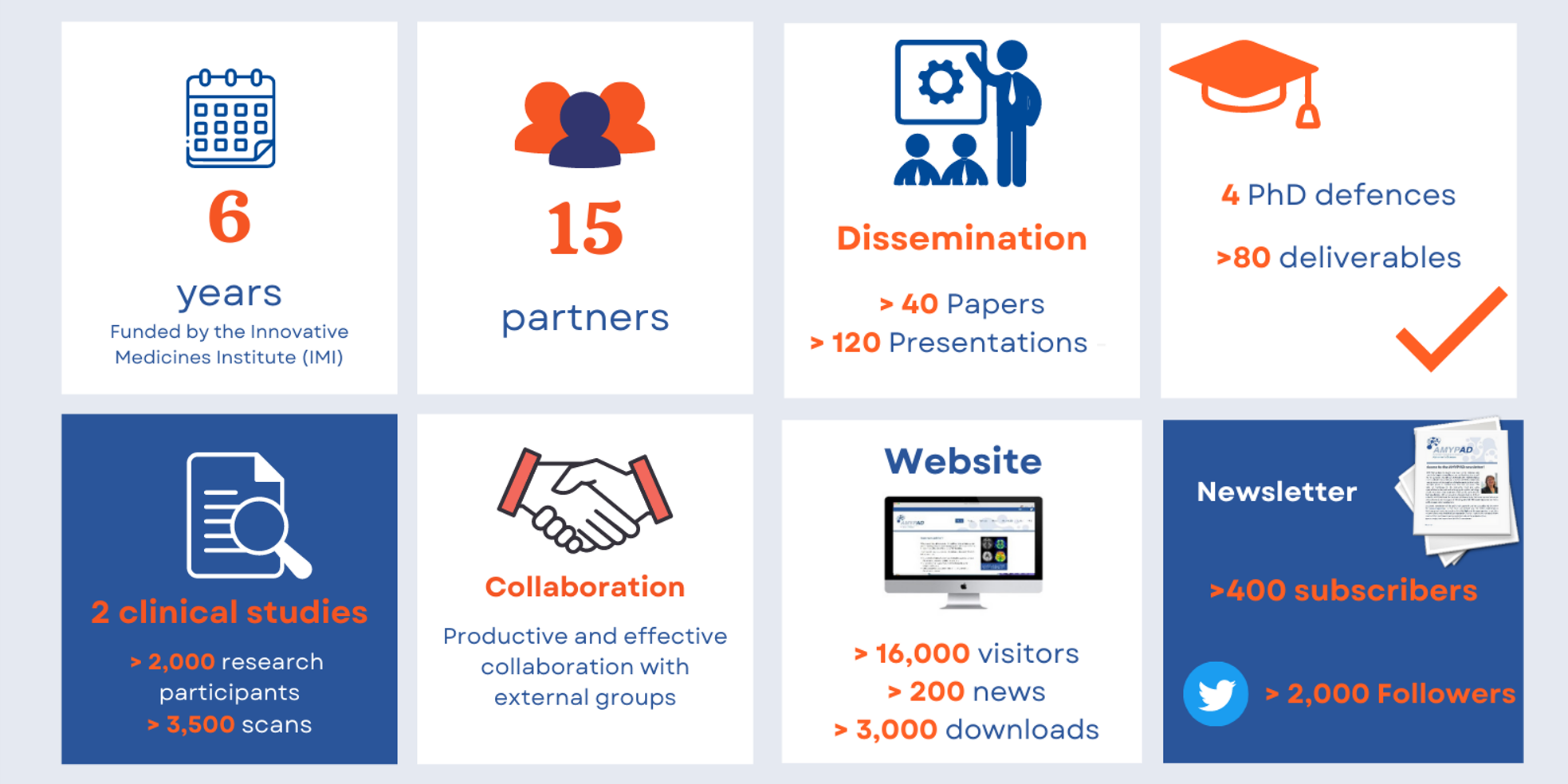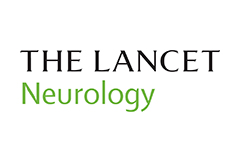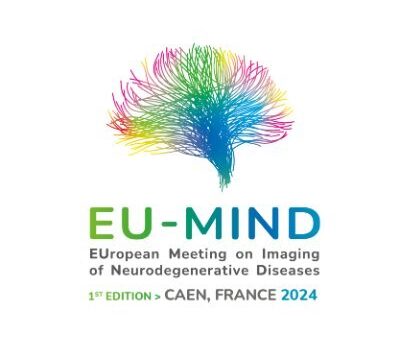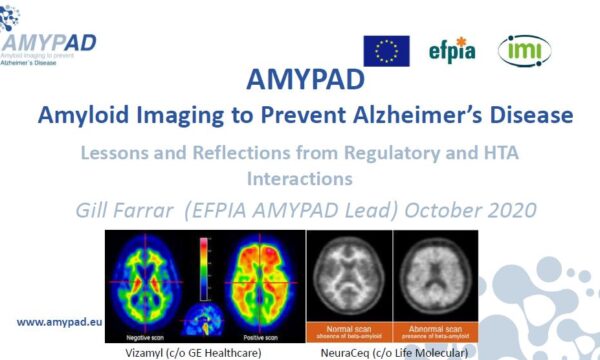The Amyloid imaging to prevent Alzheimer’s disease (AMYPAD) consortium was a collaborative research initiative aiming to improve the understanding, diagnosis and management of Alzheimer’s disease through the utilisation of ß-amyloid PET imaging. To this end, two studies were set up: the Diagnostic and Patient Management study (DPMS) and the Prognostic and Natural History Study (PNHS). AMYPAD was funded by the Innovative Medicines Institute (now known as the Innovative Health Initiative) in conjunction with 15 partner organisations for a period of 6 years, until 30 September 2022.
The collaboration within the AMYPAD Consortium was productive and efficient during the sixth year of project and, progressively setbacks imposed by the COVID-19 pandemic were overcome. In this piece, we wanted to reflect back on some of the important advances and major achievements made by each Work Package (WP).
Thanks to the WP1 (Overall project governance and management), AMYPAD members and collaborators gathered again for its General Assembly Meeting and had a productive final two-day meeting. The team also submitted the final amendment for the Grant Agreement and worked on the revision and approval of the Consortium Agreement. WP1 played an important role in the submission of the final project deliverables through 2022. They also closely monitored the AMYPAD budget from all project participants to ensure alignment with the project plan. Work and discussions continued on the development of sustainability strategies by establishing synergies with other projects, related initiatives and researchers.
In 2022, WP2 (Tracer delivery, PET scanning and image analysis) continued to focus on ensuring the correct development of PET scanning across the imaging sites along with their transfer and analysis. Efforts were mainly devoted to defining the final version of the implemented pipeline for PET image quantification, improving the quality control of the imaging pipeline, and evaluating the robustness and ensuring good performance of the Centiloid conversion. Several research projects aiming to improve the quantification methods of amyloid PET scans were designed including the development of an open-source software for amyloid quantification from PET scans. This software is to be openly released to the wider research community and includes functionality to quantify dynamic PET data, on top of Centiloid calculations for static acquisitions.
At the end of Year 5, AMYPAD-DPMS study (WP3) reached the end of the clinical phase. A total of 840 participants have been enrolled from eight European memory clinics. During Year 6, the team focused on the dataset quality check, data analysis, and preparation of scientific publications. Specifically, in 2022, a paper on the description of the AMYPAD-DPMS cohort has been published in Alzheimer’s & Dementia, a paper on the psychological impact of the amyloid-PET result disclosure in patients with subjective cognitive decline has been accepted for publication in JAMA Network Open, and a paper on the AMYPAD-DPMS primary endpoint is currently under review. Other scientific works (e.g. analysis of amyloid-PET cost-effectiveness) are currently ongoing and will be finalised in the following months.
Year 6 of the Prognostic and Natural History Study (PNHS) (WP4) was the last year of recruitment and scanning. After greatly recovering from the impact of COVID-19, the study included 11 Parent Cohorts (PCs). In total, 1321 participants consented to the study and 1419 scans were performed at the end of June 2022. All PCs were able to share their historical data and a total of ~2700 scans were included in the AMYPAD PNHS at the end of the project. Moreover, close-out visits were performed across all sites. A final version of the dataset, including all available integrated and harmonised data, both imaging and non-imaging, from the different PCs is being finalized.
WP5 (Disease modelling and monitoring treatment) also had a productive year with the expansion of the collection of external datasets with available amyloid PET imaging (in close collaboration with WP2) and the first internal data release of the PNHS (collaboration with WP4). This resulted in extensive work regarding validation and extension of previous results within WP5. WP5 used its sixth year to continue its internal and European external collaborations, resulting in multiple presentations and publications.
The team behind WP6 (Ethics, communication and dissemination) provided a big support for the communication and dissemination of AMYPAD outputs. Throughout the year, WP6 coordinated the regular maintenance of the communication tools. Amongst many highlights, the AMYPAD project was presented at key international conferences such as the International Conference on Alzheimer’s and Parkinson’s Diseases (AD/PD), the Alzheimer’s Association International Conference (AAIC) and the European Association of Nuclear Medicine (EANM). Additionally, the AMYPAD consortium published new papers.
The final General Assembly was held in Amsterdam (Netherlands) on 22-23 September. We had an exciting meeting covering the analysis of both our studies as well as discussing future activities post-IMI funding period. The work of AMYPAD does not end here. Many analyses are ongoing and we are setting up procedures and a governance structure for accessing the wealth of data that we have generated and how this will be maintained and made available going forwards.
Thanks to all partners, members, study sites and research participants for these six years of concerted efforts and collaboration!




